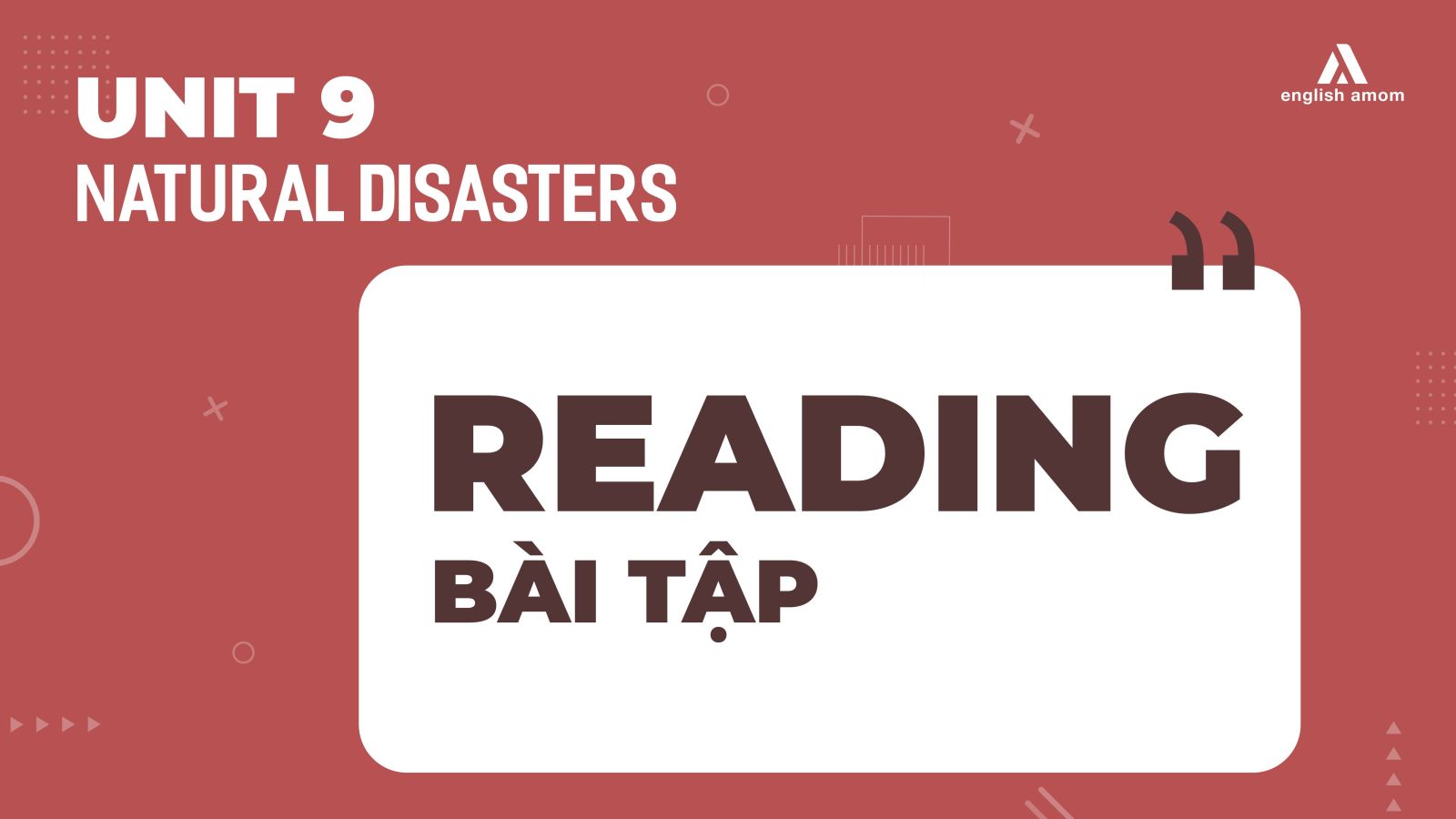
► Kênh hỏi đáp và giải thích thắc mắc kiến thức MIỄN PHÍ → truy cập LINK NHÓM: ENGLISH AMOM
► Kênh YOUTUBE hệ thống toàn bộ bài giảng CLIPS: truy cập LINK: ENGLISH AMOM CHANNEL
► Kênh TIKTOK: ENGLISH AMOM
2) Read the text and choose the best answer A, B, C, or D to each question below.
|
Tsunamis, whose name derives from the Japanese expression for ʻhigh wave in a harbourʼ, are giant sea waves. These waves are quite different from storm surges. They are also referred to by the general public as tidal waves although they have nothing to do with tides. Scientists often refer to them as seismic sea waves, which is far more appropriate because they are often the result of undersea seismic activity. Tsunamis can be caused when the sea floor suddenly moves, during an underwater earthquake or volcano, and the water above the moving earth is suddenly displaced. This sudden shift of water sets off a series of waves. These waves can travel great distances, at speeds close to 700 kilometres per hour. In the open ocean, tsunami waves are not very high, often no more than one or two metres. It is when they hit the shallow waters near the coast that they increase in height, possibly up to 40 metres. |
1. The passage mainly discusses ..........................
A. tidal waves
B. tides
C. tsunamis
D. storm surges
2. All of the following is true about tidal waves EXCEPT ..........................
A. they are as another name for tsunamis
B. they are caused by sudden changes in high and low tides
C. this term is not used by the scientists
D. the name refer to the same phenomenon as seismic sea waves
3. The word ʻthemʼ in the passage refers to ..........................
A. tidal waves
B. tsunamis
C. storm surges
D. sea waves
4. The word ʻdisplacedʼ in the passage is closest in meaning to ..........................
A. located
B. not pleased
C. filtered
D. moved
5. The word ʻshallowʼ in the passage mostly means ..........................
A. not clear
B. tidal
C. coastal
D. not deep
6. It can be understood from the passage that tsunamis ..........................
A. cause severe damage in the middle of the ocean
B. generally reach heights greater than 40 metres
C. are far more dangerous on the coast than in the open ocean
D. are often identified by ships on the ocean
ĐÁP ÁN:
| 1. C | 2. B | 3. A | 4. D | 5. D | 6. C |
3) Peter is a member of Lend-A-Hand volunteer team who provided aid for the victims of an earthquake in Haiti, in 2010.
Read his diary and decide whether the statements are true (T) or false (F).
16th January, 2010
I just arrived in Port-au-Prince, Haiti with the Lend-A-Hand volunteer team and I can't believe my eyes! The earthquake that happened four days ago has destroyed most of the buildings. This disaster has affected three million people. Thousands have lost their lives or have terrible injuries, and even more have lost their homes. Haiti suffers from hurricanes and floods every year, but this is something else! Our team's task is clearing the rubble which is everywhere!
22nd January, 2010
On Tuesday, we pulled a five-year-old boy from the rubble. He was still alive after eleven days! The United Nations has offered a small wage to the people of Haiti for helping to clean up the streets. This helps them to buy food. Conditions are terrible, though. Thousands of people are living in tents with no toilets or running water. The earthquake also caused tsunamis in nearby fishing villages that damaged beaches and even swept homes out to the sea!
1st February, 2010
The whole world is helping Haiti! Rescue teams have come from places as far away as Iceland and Japan. We have cleared the main road of Port-au-Prince, so food and medical supplies will get through soon. More volunteers have just arrived. Together, hopefully, we can rebuild Haiti after this awful disaster!
| STATEMENT | T | F | |
|
1. |
Most of the buildings in Port-au-Prince have been destroyed by the earthquake. |
||
|
2. |
No one died in the earthquake. |
||
|
3. |
Hurricanes and floods are not very common in Haiti. |
||
|
4. |
Rescue teams have come from many countries. |
||
|
5. |
A small wage has been offered to the people of Haiti for helping to clean up the streets. |
||
|
6. |
Thousands of people are living in tents. |
||
|
7. |
No one in the rescue teams is Japanese. |
||
|
8. |
Food and medical supplies cannot be delivered soon because the main road of Port-au-Prince hasn't been cleared yet. |
ĐÁP ÁN:
| 1. T | 2. F | 3. F | 4. T | 5. T | 6. T | 7. F | 8. F |

